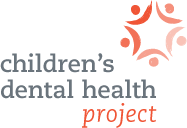The Children's Dental Health Project's blog
HHS issues 2015 standards for dental plan cost sharing
The Affordable Care Act (ACA) is an enormous opportunity to expand dental benefits to children across the country. But coverage won’t have the intended impact if it’s not affordable for more families. For this reason, the Children’s Dental Health Project (CDHP) is pleased that federal officials have issued a new rule aimed at reducing cost-sharing for families purchasing stand-alone pediatric dental coverage, but we still think more should be done to enhance affordability.
On Wednesday, the U.S. Department of Health and Human Services (HHS) released the Notice of Benefit and Payment Parameters for 2015 final rule. It sets forth, among other things, standards for actuarial value and cost-sharing limitations for stand-alone dental plans offering coverage in the health insurance marketplaces next year.
As CDHP has previously discussed, families purchasing pediatric dental coverage separately from their health plan will have an additional out-of-pocket maximum that applies only to their children’s stand-alone dental benefits. Current federal guidance sets the annual cost-sharing limit at $700 per child or $1,400 for families with multiple children. Many families may not realize that state-run marketplaces can set their own standards for stand-alone dental out-of-pocket maximums.
CDHP and other child health advocates have raised the concern that an additional out-of-pocket maximum unfairly increases financial obligations for families purchasing health and dental coverage separately. In some states, separate purchases are unavoidable because no health plan includes children’s dental coverage.
Senator Ben Cardin (D-MD), a long-time oral health champion, has been a leading voice for equitable treatment of families under the ACA and has pushed for a more affordable approach to dental plan cost-sharing. As evidence of his continued leadership, this week’s final rule aims to reduce the potential out-of-pocket burden for families purchasing stand-alone pediatric dental coverage and apply standards consistently across all states.
HHS had originally proposed to reduce the out-of-pocket maximum for stand-alone dental plans to $300 per child or $400 for multiple children and eliminate requirements that the plans meet specific actuarial value targets. Under the latter, dental plans could lower actuarial values by raising family cost-sharing on categories like preventive services, which could affect access to basic care.
In an attempt to balance affordability with the need to avoid marketplace disruption, the final rule sets the stand-alone dental out-of-pocket maximums for 2015 at $350 per child and $700 for multiple children and still requires that dental plans meet an actuarial value of either 70% or 85%. In order to achieve consistency across states, the rule applies these standards to both state-run and federally-facilitated marketplaces beginning in 2015.
CDHP applauds the move to minimize the financial burden on families. However, we remain concerned with finding a better approach at the national level that ensures a family’s maximum out-of-pocket obligations are the same, no matter how they purchase their children’s dental coverage.
